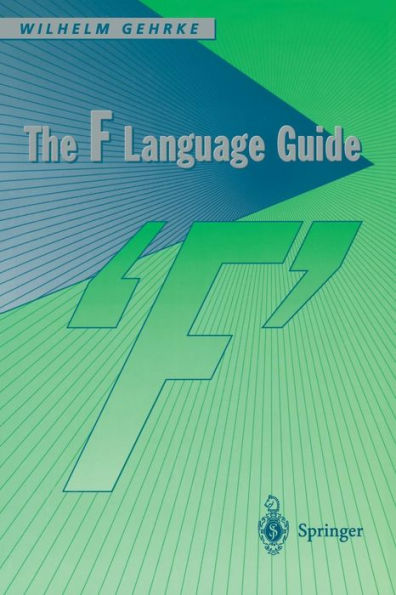The F Language Guide
Fortran is currently the world's most powerful numeric language and F is a subset of this. F is a programming language which is nearly as powerful as its parent language, containing the modern language features of Fortran, yet smaller and easier to use, debug and teach than Fortran. As with his previous Fortran books, Wilhelm Gehrke has provided a clear and comprehensive guide to the F language in this book which will be welcomed by practitioners and students alike. The F Language Guide will serve as a language reference manual for the novice as well as for the experienced programmer, as teaching material for courses in F programming, and in programming methodology. The guide concentrates on the description of the language as a programmers' tool. A representation of the F Syntax using railroad diagrams will be available on the Springer server at http://www.springer.co.uk/
"1002511508"
The F Language Guide
Fortran is currently the world's most powerful numeric language and F is a subset of this. F is a programming language which is nearly as powerful as its parent language, containing the modern language features of Fortran, yet smaller and easier to use, debug and teach than Fortran. As with his previous Fortran books, Wilhelm Gehrke has provided a clear and comprehensive guide to the F language in this book which will be welcomed by practitioners and students alike. The F Language Guide will serve as a language reference manual for the novice as well as for the experienced programmer, as teaching material for courses in F programming, and in programming methodology. The guide concentrates on the description of the language as a programmers' tool. A representation of the F Syntax using railroad diagrams will be available on the Springer server at http://www.springer.co.uk/
54.99
In Stock
5
1

The F Language Guide
334
The F Language Guide
334Paperback(Softcover reprint of the original 1st ed. 1997)
$54.99
54.99
In Stock

Product Details
| ISBN-13: | 9783540761655 |
|---|---|
| Publisher: | Springer London |
| Publication date: | 07/11/1997 |
| Edition description: | Softcover reprint of the original 1st ed. 1997 |
| Pages: | 334 |
| Product dimensions: | 6.10(w) x 9.25(h) x 0.03(d) |
From the B&N Reads Blog
